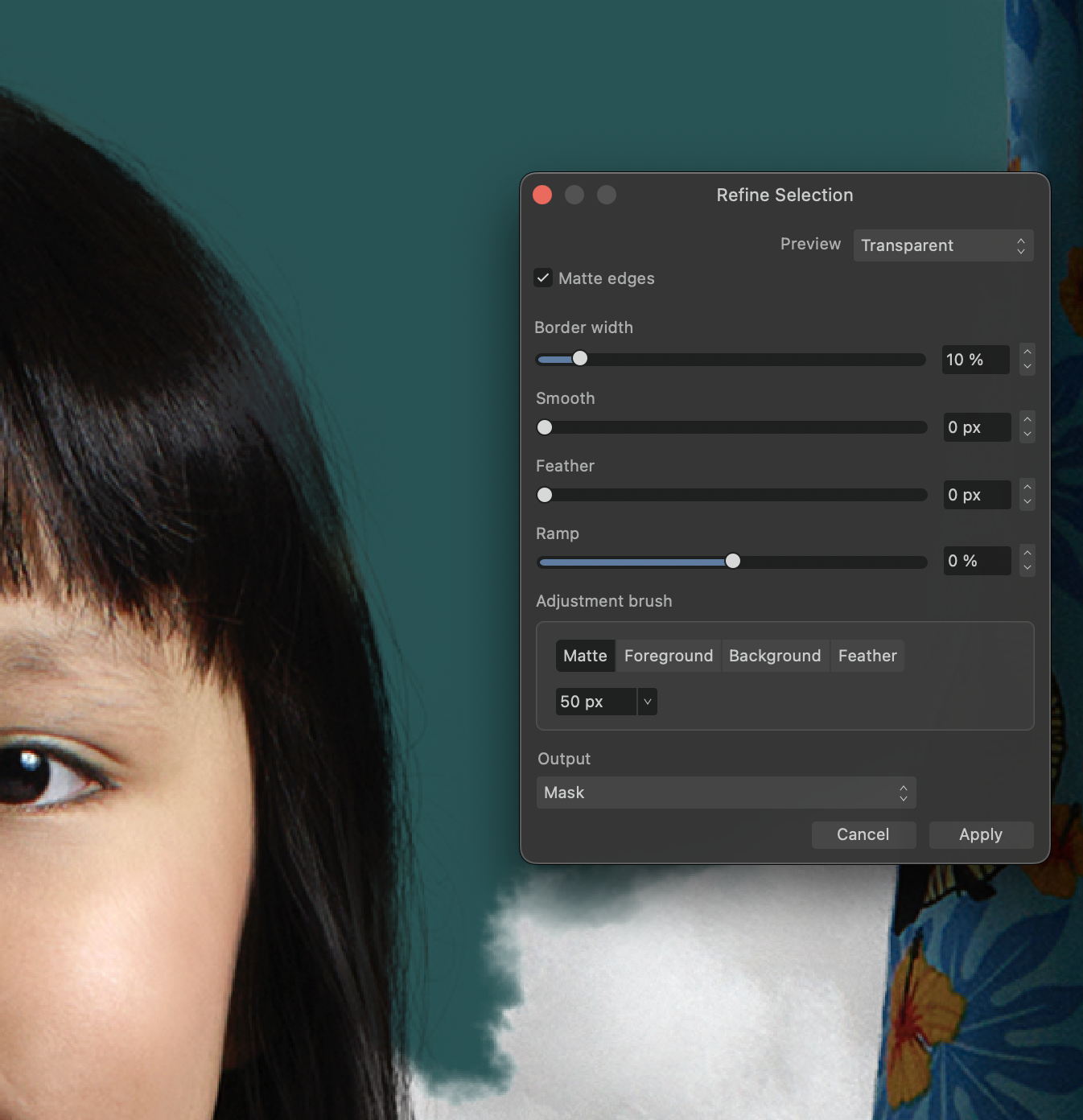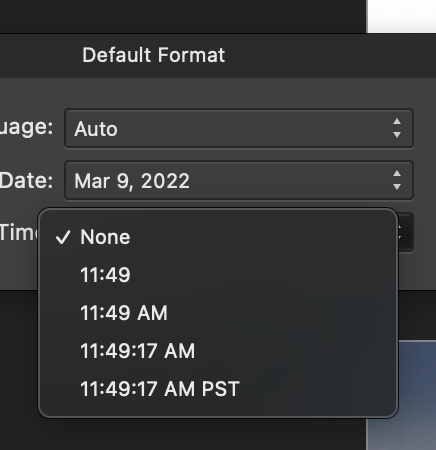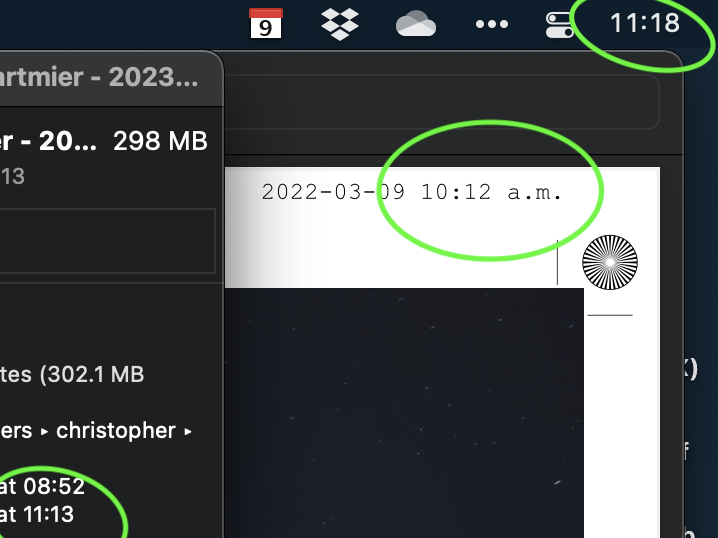
DesignStationYT
Members-
Posts
50 -
Joined
-
Last visited
Everything posted by DesignStationYT
-
Publisher – Disappearing Text in Frame
DesignStationYT replied to DesignStationYT's topic in V2 Bugs found on macOS
I think I've found a workaround after a few hours of frustration—it may be related to having "Reflow pages" turned on. By turning off facing pages and reflow pages, then turning facing pages back on again, a version of the file that was experiencing the right hand page disappearing text issue no longer has that issue. I'll upload a "damaged" version and a "fixed" (perhaps fixed? Hopefully?) version once I'm on the other side of getting it finalized for the client. -
Publisher – Disappearing Text in Frame
DesignStationYT replied to DesignStationYT's topic in V2 Bugs found on macOS
Even more strange, the disappearing text only seems to occur on right-hand pages. -
Suddenly this evening, after spending the entire day working on a file, I've run into an issue where if I apply a style or make a change on a page, all of the text within the frame basically becomes invisible against the page but remains selectable. The only "quick" way of making it visible again is to close the document and re-open it. Any other style changes or adjustments will immediately cause that frame to go white again. May be related to cross-references? I didn't see any such issues in the file until I began trying to build some of those out (though this occurs in other parts of the file when selecting styles that are not cross-references). Example below of if I select some text within a frame and then do something no more complex than selecting the character style that is already applied to it. Not a fun thing to run into with an almost 200 page document that needs to be delivered the next day!
-
As of just now, I'm unable to launch Photo, Publisher or Designer. All are current versions, and all are requiring me to go through a licence activation panel that just says "Please try again in a moment" when I attempt to sign in to my Affinity account. Edit: As of about 15 minutes later, all apps now launching without issue and no longer presenting the licence activation panel. If someone at Affinity fixed something, 🙏 thank you!
-
Stroke Expand Issue in 2.1.0
DesignStationYT replied to DesignStationYT's topic in V2 Bugs found on macOS
Just to bump, this bug appears to still be present in today's 2.2 release of Designer. -
Stroke Expand Issue in 2.1.0
DesignStationYT replied to DesignStationYT's topic in V2 Bugs found on macOS
Sample file, where you can see the result of the stroke before being expanded, and the glitch that occurs once it is. Stroke Glitch.afdesign -
At first I thought this was related to the new phased stroke feature, but I've had this happen with that on and off. Either way, where I've used a stroke that consists of dots, the first dot in the stroke is malformed when outlined or in an exported PDF. I did not have this issue in the prior version of Designer 2.
-
I created a selection and then used the Refine tool to turn the selection into a mask and fine-tune the selection. The preview looks great.But once I hit apply to create the mask, I get this:Frustrating when the preview showed exactly what I wanted! Has anyone else run into this or found a workaround?
-
PSD Open Regression from v1
DesignStationYT replied to DesignStationYT's topic in V2 Bugs found on macOS
@CallumFor sure! I've sent a DM with a download link to grab it. Thank you! -
I'm curious if anyone else has experienced this and how they've resolved it, but I've been working on a project with PSDs provided by a photographer that include a number of layer effects. I worked on an initial phase of this project in Affinity Photo 1, and now am working in Affinity Photo 2—and I've noted that HSL adjustments with masks, recolour adjustments, etc all seem to experience issues. This is how the image should appear: This is how the PSD opens in AP2: Meanwhile, this is how AP1 opens it: There are some minor issues in the AP1 result, but by and large it's very close to how it's intended to appear in Photoshop. But it seems like AP2 reverses masks and just generally confuses things. I've tried saving the PSD as an afphoto file from AP1, but it looks like same in AP2 as the PSD file.
-
I've noted a strange behaviour when trying to update a table with new content copy/pasted from Excel. For example, if I select the content I wish to copy in Excel... ...and then paste that into the cells I wish to update/replace in Publisher... There often seems to be one cell of blank content that carries over and replaces the first column of the next row. So in this case, that removes the content that was in row 13 (which is a single cell with all columns merged).
-
Artboard bleed not exporting in V2
DesignStationYT replied to DesignStationYT's topic in V2 Bugs found on macOS
I think you may have identified the issue. Yes, there are adjustments in there—which wasn't an issue with Designer v1. The way I often do these is group background elements and then duplicate and rasterize the duplicate... that way there's no risk of transparency issues or the like in the output. If I delete the (hidden) unrasterized group that I keep if I need to come back and adjust the file, keeping only a rasterized background element, it looks like the bleed works. Again, not an issue in Designer v1, or if you open as spreads in Publisher v2. Example file attached. 4N - Christmas 2022 - Commercial Development Cookie Tag.afdesign -
Hi there, Over the years of using Designer v1, I got accustomed to setting up multiple related items as artboards in a single Designer file—all of the print ads or posters for a particular campaign, for example. Although I found the bleed display bug frustrating as others did, at least any exported PDFs always displayed the bleed as they should. It looks like in v2 this no longer works—I've tried several times to export PDFs from artboards which have bleed active, and would have worked in v1, that do not work in v2. Thankfully there is a workaround... if I open the Designer file in Publisher and convert to spreads, I can export a PDF that includes bleed. But it would be extremely helpful to have the bug in Designer fixed so I can just use my usual Export persona workflow again! Thank you!
-
PDF page information includes wrong time
DesignStationYT replied to DesignStationYT's topic in V1 Bugs found on macOS
Not entirely correct. We no longer observe daylight savings changes here, so during the winter months we're equivalent to Mountain Time and in the summer months we're equivalent to Pacific Time. -
PDF page information includes wrong time
DesignStationYT replied to DesignStationYT's topic in V1 Bugs found on macOS
No, that's an hour behind too. And interestingly it shows PST – which is not a time zone I'm in or that my system is set to. -
PDF page information includes wrong time
DesignStationYT replied to DesignStationYT's topic in V1 Bugs found on macOS
Correct! -
PDF page information includes wrong time
DesignStationYT replied to DesignStationYT's topic in V1 Bugs found on macOS
Time zone is set to Yukon Standard Time. -
This is a pretty minor bug, but a strange one. I've noticed that when I output a PDF from Publisher with all marks on and the date and time is included on the PDF, the time included is an hour behind the system time.
-
Thanks for the assist here! After a whole lot of digging and attempts at tracking down the issue, it turns out that my employee was using an older version of Nunito and Montserrat, and that version changes between her original downloads and the current downloadable versions have affected the letter spacing. Although it seemed like Typeface was clearing its Google downloads, it wasn't—so it took a manual clearing of those to trigger the new versions being downloaded.
-
I've run into an issue and I'm struggling to track down exactly why. My employee is using an identical version of Publisher (1.10.4) on almost an identical version of macOS (I'm on 12.2.1 and she's on 12.2), using the same version of Typeface (3.5.0) and we've both re-downloaded the Google Font library through that app. And yet, we get vastly different text rendering, so when I open her files using these fonts (Nunito Sans and Montserrat) I get a very different result than she does. I've tried opening the Publisher file on my laptop (same versions of everything as my desktop) and get the same broken results... and I'm at a loss as to why. I can't tell if it's an OS issue, a Publisher issue, a font issue—but I can't spot any reason to indicate which (given we're using the same version of the fonts as well), nor whether the issue is with my employee's side of things or mine. I'm including a screenshot from her PDF (which is as it appears in Publisher on her computer) and how it loads when I look. Has anyone seen something like this? Any ideas would be greatly appreciated!
-
Hyperlinks split over two lines in Publisher PDFs
DesignStationYT replied to JeremyTankard's topic in V1 Bugs found on macOS
Started as a Publisher document. -
Hyperlinks split over two lines in Publisher PDFs
DesignStationYT replied to JeremyTankard's topic in V1 Bugs found on macOS
I've been running into this issue with Publisher 1.8.3 (on macOS 10.15.6). In the attached screenshot, the first URL is truncated after the /402/ and the second is truncated after the /pdf/ and the second line isn't an active link in either case. Unfortunately the document I'm working on contains a lot of multi-line URLs, so this is a pretty significant issue for me.


















